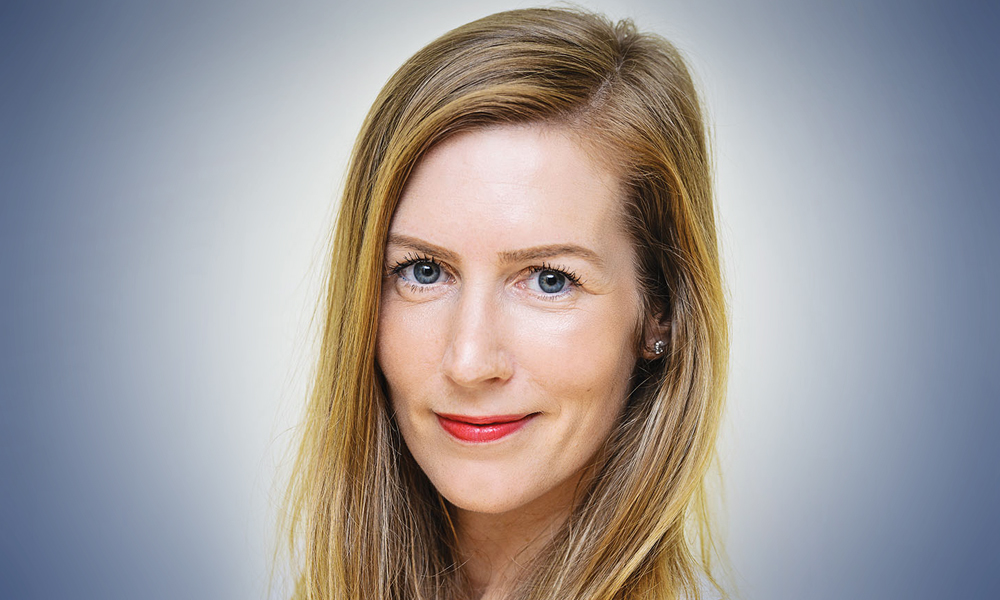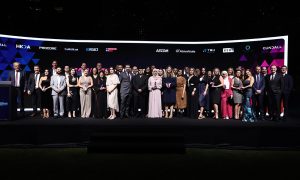Women in Construction: Godwin Austen Johnson’s Tia Lindqvist
“It is important for anybody, regardless of gender, to believe in their own abilities and knowledge”

“I have been very well supported by GAJ in terms of my career growth, and there is continuous encouragement to improve and progress further based on professional and personal qualities. We have some strong women within the organisation, and while the firm is still fairly male-dominated, there have been recent promotions of women for higher management positions”
As part of the Women in Construction series, Jason Saundalkar talks to Godwin Austen Johnson’s Tia Lindqvist about her influences, career and gender diversity in the construction industry…
What drove you to get into construction and your very first role in the industry? What were some of the influences that set you on your path?
Growing up I was always very inventive and creative, and loved art and crafts at school. However, I didn’t really consider design being a viable career option until much later.
While working within the field of law, I took evening and weekend design classes at the University of Arts in Helsinki and was further surrounded by the creative spark of friends who were successful in their roles within the design, film and architectural industries. These influences ignited in me the desire to get more involved within the creative field and consider an actual career move.
After working in Germany managing large-scale international art and design fairs, I strongly felt the passion to follow my own creative path and continued studying interior design at the Glasgow School of Art in Scotland. At the degree show I met Marc Dorrian, design director at Curious, who had just relocated from Bahrain to Scotland and was looking into extending his team.
My first task as an interior designer was to create public area and guest room concepts for three different four-star hotels in Switzerland, together with a colleague, within a very short period of time. It was a fantastic experience to be thrown into the deep end of the real design world at the very beginning and take ownership of a large project like this.
My fluency in speaking German was also a great asset while communicating and presenting with the international client. Since the first day working as an interior designer I have never questioned my career move, and I’m excited about the new creative challenges lying ahead.
Please share with us a brief description of your career and your key achievements.
I was enjoying my design work in Glasgow, yet I was struggling with the cold and rainy Scottish weather. By chance I connected with Kevin McLachlan, who was leading an interior design office in Dubai, and the potential opportunity discussed over a Skype call was quickly realised. Within a month, I found myself relocating to the Middle East.
The first day at Godwin Austen Johnson (GAJ), I was given the task to work on the concept of a large-scale, high-end residential project, and I quickly took ownership of the design process, delivering all the project stages to construction. Besides working on residential projects, I’ve gained valuable experience on multiple mid- to high-end hospitality developments and school projects, which have allowed me to grow in my designer role. I was quickly promoted to my current position as a senior interior designer within the company.
Currently, one of the hospitality projects I am working on is a four-star branded hotel and serviced apartments development, which is one of the most creatively exciting projects I have had the opportunity to work on to date.
What would you say is your proudest moment in the industry?
The success of the Serenia Residences, The Palm Jumeirah, the first interior design project I worked on since coming to Dubai, has been one of the highlights of my creative path. Liaising from the beginning closely with a client who shares a passion for quality and beauty, and being able to coordinate the implementation of the design through to construction stage via weekly visits with the site team, has led to outstanding results.
Both the interior and architecture of the project have gained recognition with multiple awards and, most importantly, the feedback from the end users has been fantastic. I take pride in being intensely involved in bringing to life the client’s vision and creating a strong, well-considered habitat, which engages and resonates in the wellbeing of a satisfied user.
What are some of the barriers to women entering the construction industry? What was your personal experience?
Growing up in a Nordic country with high gender equality, I never questioned if my gender would dictate any occupational choices. From personal experience, and I believe also generally speaking, there are no obstacles for women to enter the construction industry as such. Currently, for example within GAJ, there is a higher proportion of women designers in the interior design department than there are men.
However, as a woman in the interior design sector you might encounter more challenges on the construction site, which is still mainly men-dominated terrain, and the transition from office to site can be complicated.
Personally, having been involved with several sites in a coordination role, I have not experienced any stereotypical perceptions and have been always met with respect. It would be great to think this is the rule rather than the exception.
Every so often one does hear stories about the challenges female colleagues who are based permanently on-site encounter, in terms of bringing authority to the construction site and being typecast as not understanding the dynamics of construction.
How do you see the GCC construction markets changing in the coming years? Share your thoughts and views on the market.
Women in the interior design industry locally are being continuously more appreciated and taken seriously as business partners. They are highly professional, ambitious, talented and skilled, and understand the importance of networking. Women in this sector are creating more opportunities for themselves by continuously delivering strong performances, diminishing any stereotypes that might have prevailed in the past.
In Dubai, there is an increase in the number of interior design offices that are established by women or are being led by a female director, winning awards and being featured in the worldwide design media. In general, current overseas studies show that companies with better gender parity and those with women involved within higher management roles perform better than companies with lower diversity.
Diversity brings highly valuable opportunities for companies, providing a wider range of perspectives and awareness and improving the firm’s image and attractiveness for potential clients. Hopefully this development will continue to accelerate within more design and architectural practices in the region in the future.
Everyone has a part to play in diversity and equal pay. What would you like to see government authorities and construction firms do to increase diversity and make pay a level playing field?
Studies show that women engineers and architects, for example, are being paid less than their male counterparts even just a few years after graduation. Maternity brings another challenge for women in their careers.
Equal opportunities for career progression and equal salaries should be a given. It would be great to see companies bind themselves to a policy of employing a higher percentage of women, especially in management positions, and ensuring equal remuneration.
In general, companies should show strong core values by supporting a proactive, fair diversity strategy. Along with ensuring gender parity, companies should commit to creating a work environment and culture that is more accommodating and favourable for women, as well as motivating and increasing support by male employees in favour of gender diversity and inclusivity.
Do you feel there’s a limit to how far you can progress within your organisation?
I have been very well supported by GAJ in terms of my career growth, and there is continuous encouragement to improve and progress further based on professional and personal qualities. We have some strong women within the organisation, and while the firm is still fairly male-dominated, there have been recent promotions of women for higher management positions.
In an ideal world, the talent, know-how and personality of a person should be the drivers opening opportunities for any successful career path, regardless of gender.
How does GAJ approach diversity in the workplace? What more can your firm do to increase diversity?
In terms of gender parity, there have been a number of women in the interior design department promoted to higher management positions based on their efforts and achievements. GAJ has lately promoted women in the interior design department into higher management positions, purely based on the person’s achievements and efforts towards the company.
What advice would you give to a woman entering the GCC construction industry today?
It is important for anybody, regardless of gender, to believe in their own abilities and knowledge in the highly competitive market; perhaps even more so if you are a new graduate and looking for your first role within the industry.
Networking is also key. From my experience regarding the interior design sector in Dubai, the city is so diverse and forward-thinking, and the creative field highly welcoming for any strong talent, that it does not make a difference if you are a man or a woman. What matters more is your personal competence and references.
To support the drive towards gender balance in the industry, Middle East Consultant and meconstructionnews.com are highlighting female construction professionals in a series of profiles. By telling their stories and sharing their experiences on our print and digital platforms, we hope to inspire more women to join this vibrant industry.

























